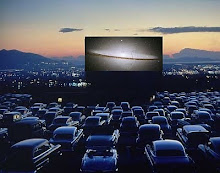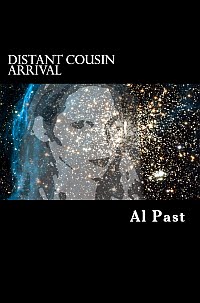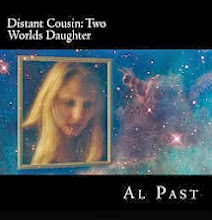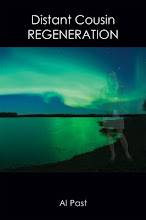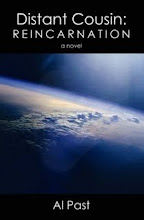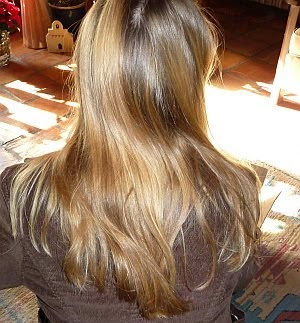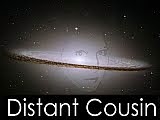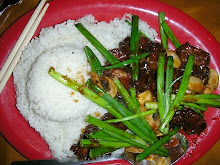
Here are two excerpts from Distant Cousin: Regeneration, one early in the story and one from later on. Neither contains any blatant spoiler!
1.
The lunch period at Juarez Academy in Las Cruces, New Mexico, was almost over. It was a small school, and accommodated the entire student body in its cafetorium, the elementary students at one end and high school and middle school students in the other. They had mostly finished eating and were laughing and talking amid the clatter of dishes, utensils, and trays. One ninth grader, however, had quietly slipped out onto the gallery facing the playground, despite the chilly wind which gusted out of the northwest. He was huddled on a bench, bent over a book in his lap, holding down several sheets of paper which he studied closely.
His classmates knew him as Harry Saenz, but his real name was Heriberto. His family liked old-fashioned names. Some were handed down from ancestors but others might have come from the Bible—he had no idea. Although he was one of the many scholarship students at Juarez Academy and had been given a 90% tuition grant, his mother still had to pay the other ten per cent. It was difficult for her, and he was trying his best to fulfill his side of the bargain. Calling attention to his weird name would have been embarrassing.
At some point he realized someone was standing close. He looked up in surprise. It was one of the elementary girls, a fifth grader. She was just standing there, looking at him. He stared back for two beats.
“Hi,” she said.
“Uh, hi.”
“I’m Clio Méndez.”
“Yeah, I know. I know your brother. Julio, right?”
“Uh huh.”
“We, uh, we helped each other with projects last week.”
“Cool.”
Everyone in the school knew Clio Mèndez. She was a funny-looking little runt, small, skinny, Spanish-speaking but with chestnut hair too light to be pure Hispanic, kind of a pointy face, and nearly invisible eyebrows over keen pale hazel eyes that seemed to see straight into things. The wind was whipping her hair behind her. The word was she was one of the smartest kids in the whole school, next to her twin brother. She was making him nervous. Why was she standing there? What did she want? What should he say?
“I’m Harry.”
She spoke again.
“You come to school with two dogs every morning, right? Are those your dogs?”
“Huh? Yeah.”
“Where do they go while you’re in school?”
“Home.”
“By themselves?”
“Yeah.”
“Is it far?”
“About a mile, I guess.”
What was that to her?
“And they don’t have trouble with traffic or other people?”
“No.”
“And they come back in the afternoon to walk home with you?”
“Yeah.”
“How do they know what time it is?”
“I don’t know. They just know.”
“How did they learn to do that?”
“I taught them.”
“Awesome. Have you taught them other things too?”
“Yeah. I guess.”
“Can you do that with other dogs?”
“Probably.”
“Do you like animals?”
“I do.”
“That’s so cool. Can I meet them sometime?”
“The dogs? Uh, sure....”
The bell five feet over his head clanged loudly. He jumped and the wind instantly ripped the notes from under his hands. At practically the same moment, the girl snatched both out of the air, one in each hand. Her body hadn’t moved but suddenly her arms were in front of her holding the flapping sheets by the corners. She put them together and handed them to him with a smile. He took them and looked at her. Had she really done that? Finally the clamor of kids and dozens of chairs scraping the floor leaking through the window behind him called him back to his senses.
“Thanks. Got a math test next period. Better go.”
“Me too. I’ll see you later...about those dogs? OK?”
“Sure.”
“Good luck on your test.”
2.
For once, Clio was prepared for a shopping trip. Doña Dolores had given her the addresses of three botánicas between Cloudcroft and Tularosa, twelve miles north, and even called the proprietors to tell them a young friend was coming to shop for her. A little Anglo girl buying medicinal plants might cause questions, even if she spoke good Spanish. Clio had found the addresses on Google Maps, and printed copies to bring along.
The biggest and oldest of the botánicas was in a rambling adobe building on the Hispanic outskirts of Cloudcroft. It was closed for lunch. They drove on to Tularosa, where they located the other two establishments, smaller but each interesting in its own way. Clio shopped enthusiastically but carefully in both, and then in the one in Cloudcroft on the return leg. Her mother waited patiently in the car the whole time.
Clio bought oshá and alta misa de la sierra; she bought ajeño and tronadora, good for diabetes; she bought ponil, the native aspirin, astragalus and mullein, turmeric and olive leaf extract in bulk, all immune system boosters; she bought konjac and pokeweed, for the skin, feverfew, comfrey, ephedra, yerba buena, and toloache, a kind of nightshade and very potent medicine, and a dozen more. When she added four large bags of maguey agave and two of ocotillo blossoms (for sore throats), to the dozens of smaller bags in the trunk of the Corolla, there was no room left and she was out of money. She had spent all her mother’s money as well.
“Thanks, Mom,” she said, fastening her seat belt.
“Did you find everything you wanted?”
“Mostly. That last store even had some Chinese herbs, but we’re out of money. I can get those on the internet.”
“I saw an ATM machine around the corner. I need to stretch. Let’s walk there and get a little cash.”
The ATM was halfway down the block, between a boarded-up business and a bank, which looked closed, at 3:45. Six or seven high school-age boys smoking cigarettes in an alley eyed them as they walked past, but Ana paid no attention.
She walked straight to the machine, fumbling for her card. She was tucking away her cash when Clio shouted.
“Hey!”
Ana whirled to see a boy with an arm around Clio, a knife in his other hand. Two more boys were headed toward her at the ATM machine while the fourth stayed behind her daughter.
“OK, mami, hand it over,” said the one on the left. That was the last thing he said.
Ana looked sharply at Clio, turned up her eyes, and fainted, falling to the ground.
At least that’s what the boys thought. By the time she hit the ground the boy who held Clio became aware that some number of his fingers had been broken and the girl had the knife.
Ana landed face down, arms braced against the sidewalk, and whipped her legs under the two boys who were closest to her. She was on her feet again almost before they landed, dropping on one knee into one boy’s stomach and delivering a chop to the throat of the other. Clio’s attacker stood dumbfounded, grimacing in pain. The fourth boy turned and ran for the alley.
Ana caught him before he had gone ten steps. As Clio screamed “No, Mom!” she tripped him from behind. He fell full speed to the sidewalk on his face, crying out as his head bounced to reveal a massively bloody nose. Ana returned to the knifeless boy with the injured hand, her eyes blazing. The kid stared at her in horror.
“No, Mom, don’t!” pleaded Clio.
Ana pushed off one foot in a lunging motion and thrust a fist into the boy’s solar plexus. He doubled over and fell to his knees, retching.
“Mom! Mom!” Clio screamed. “That’s enough! You said only do enough to protect yourself! Stop, Mom!”
Ana glared at the four boys on the sidewalk. She spoke in Luvit.
“Môje desh órhozh nikhda!” (“No one threatens my children!”), adding in English, “Let’s go.”
They headed around the corner to the car. The alley was empty.
Clio got in on the passenger side, ignoring her seat belt. She stared at her mom.
Ana shut her door and burst into tears.














